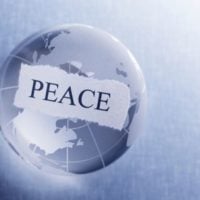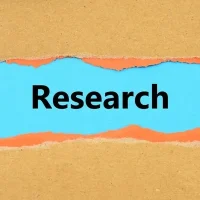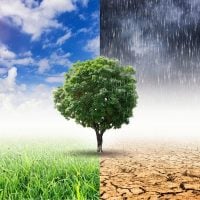The International Union for Conservation of Nature (IUCN) stands as a pivotal organization in the global conservation landscape. Established in 1948, the IUCN has evolved into a leading authority on the status of the natural world and the measures needed to safeguard it. With a membership that includes government agencies, non-governmental organizations, scientists, and local communities, the IUCN operates on a collaborative model that emphasizes the importance of diverse perspectives in conservation efforts.
Its mission is to influence, encourage, and assist societies throughout the world to conserve the integrity and diversity of nature and to ensure that any use of natural resources is equitable and ecologically sustainable. The IUCN is perhaps best known for its Red List of Threatened Species, which serves as a critical indicator of the health of the world’s biodiversity. This comprehensive inventory assesses the conservation status of thousands of species, providing essential data that informs policy decisions and conservation strategies globally.
The organization’s work extends beyond species assessment; it encompasses a wide range of initiatives aimed at promoting sustainable development, protecting ecosystems, and fostering resilience in the face of climate change. As such, the IUCN plays a crucial role in shaping conservation science and policy on an international scale.
The IUCN’s Role in Conservation Science and Policy
The IUCN’s influence in conservation science and policy is multifaceted, encompassing research, advocacy, and capacity building. One of its primary functions is to provide scientific knowledge that underpins effective conservation strategies. By conducting rigorous research and synthesizing data from various sources, the IUCN equips policymakers with the information they need to make informed decisions.
This evidence-based approach is vital in addressing complex environmental challenges, such as habitat loss, climate change, and biodiversity decline. Moreover, the IUCN actively engages with governments and international organizations to advocate for policies that prioritize conservation. Through its various commissions and working groups, the IUCN facilitates dialogue among stakeholders, ensuring that diverse voices are heard in the policymaking process.
This collaborative approach not only enhances the legitimacy of conservation initiatives but also fosters a sense of ownership among local communities. By empowering stakeholders to participate in decision-making, the IUCN helps to create policies that are more likely to be effective and sustainable in the long term.
The IUCN’s Conservation Framework: A Holistic Approach
At the heart of the IUCN’s efforts is its Conservation Framework, which emphasizes a holistic approach to biodiversity conservation. This framework recognizes that effective conservation cannot occur in isolation; it must consider ecological, social, and economic factors simultaneously. By integrating these dimensions, the IUCN aims to create solutions that are not only ecologically sound but also socially equitable and economically viable.
One key aspect of this holistic approach is the recognition of interconnectedness within ecosystems. The IUCN promotes strategies that address not just individual species but entire ecosystems, acknowledging that the health of one component often depends on the health of others. For instance, initiatives aimed at restoring wetlands not only benefit aquatic species but also enhance water quality for surrounding communities and mitigate flooding risks.
This interconnected perspective encourages a more comprehensive understanding of conservation challenges and fosters innovative solutions that can yield multiple benefits.
The Integration of Science and Policy in the IUCN’s Conservation Framework
The integration of science and policy is a cornerstone of the IUCN’s Conservation Framework. The organization recognizes that scientific research must inform policy decisions to ensure that conservation efforts are grounded in reality. To facilitate this integration, the IUCN employs a variety of strategies, including capacity building for policymakers and scientists alike.
By enhancing the skills and knowledge of both groups, the IUCN fosters a collaborative environment where science can effectively inform policy. One notable example of this integration is the IUCN’s work on protected areas. The organization has developed guidelines for establishing and managing protected areas based on scientific principles.
These guidelines help governments and organizations create effective conservation strategies that are informed by ecological data while also considering social dynamics. By bridging the gap between science and policy, the IUCN ensures that conservation initiatives are not only scientifically sound but also politically feasible.
Case Studies: Successful Implementation of the IUCN’s Conservation Framework
The success of the IUCN’s Conservation Framework can be illustrated through various case studies from around the world. One such example is the restoration of degraded landscapes in Madagascar. The IUCN collaborated with local communities to implement sustainable land management practices that not only restored biodiversity but also improved livelihoods.
By integrating traditional knowledge with scientific research, this initiative demonstrated how community engagement can lead to successful conservation outcomes. Another compelling case study is the establishment of marine protected areas (MPAs) in the Caribbean. The IUCN played a crucial role in facilitating discussions among stakeholders, including local fishers, government officials, and conservationists.
Through this collaborative process, MPAs were designed to protect critical habitats while also ensuring that local communities could continue to benefit from marine resources sustainably. This example highlights how the IUCN’s holistic approach can lead to successful conservation outcomes that balance ecological integrity with social equity.
The Future of Conservation Science and Policy: Challenges and Opportunities
As we look to the future, conservation science and policy face a myriad of challenges and opportunities. Climate change remains one of the most pressing issues, threatening ecosystems and species worldwide. The IUCN recognizes that addressing climate change requires innovative approaches that integrate adaptation strategies into conservation planning.
This may involve rethinking traditional conservation methods to account for shifting species distributions and changing environmental conditions. Additionally, there is an increasing need for collaboration across sectors to tackle complex environmental issues effectively. The IUCN is well-positioned to facilitate these collaborations by bringing together diverse stakeholders from government, civil society, academia, and the private sector.
By fostering partnerships that transcend traditional boundaries, the IUCN can help create comprehensive solutions that address both environmental sustainability and human well-being. In conclusion, the International Union for Conservation of Nature plays a vital role in shaping conservation science and policy through its holistic approach and commitment to integrating science with practical action. As we navigate an uncertain future marked by environmental challenges, organizations like the IUCN will be essential in guiding efforts toward sustainable solutions that benefit both nature and humanity.
By learning from successful case studies and embracing innovative strategies, we can work together to ensure a healthier planet for generations to come.








































